Our Old-Fashioned Scottish Treacle Scones are packed with warm treacle and gingerbread flavours. Try one hot from the oven, spread with butter and a dollop of fruit jam, for one of the best old-fashioned teatime treats. These scones are egg-free, as are many old scone recipes, so can be easily prepared for vegan or plant-based diets.
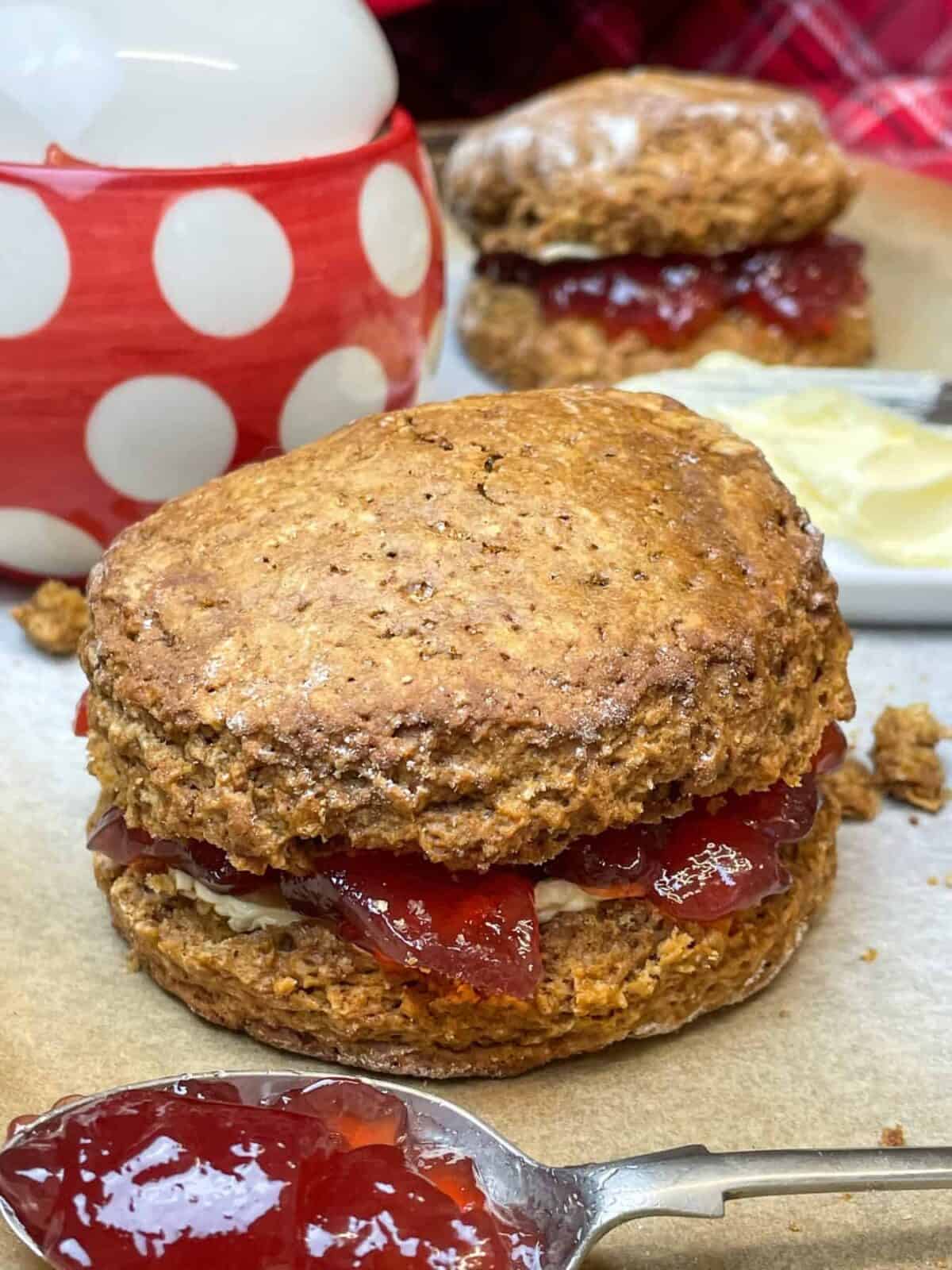
These large Old-Fashioned Scottish Treacle Scones are just the perfect Afternoon tea or tea-time treat. If you've never experienced a treacle scone before then you are in for a wee surprise as they are not too sweet, but soft and rich with the flavours of treacle and gingerbread. Treacle scones are a classic Scottish favourite and are common in most Scottish bakeries, cafes and tearooms.
Jump to:
Origin of treacle scones
The scone is thought to have originated in Scotland, where it was originally made with oats and baked on a griddle. The name "scone" may have been derived from the Gaelic word "sgonn," meaning a shapeless mass or large mouthful. Another theory is that the name is taken from the Stone of Destiny (or Scone), where Scottish kings were once crowned.
Treacle, a syrup that's a byproduct of refined sugar, has been a staple in British cooking for centuries. Black treacle, similar to molasses, is often used in richer, darker recipes like gingerbread and Parkin, while lighter treacle (or golden syrup) is used in lighter bakes.
Traditional scones were bread like and evolved out of the Scottish bannock bread which is a type of flat bread prepared with barley flour, wheat, or oats, water, butter or a fat such as lard or dripping, and sometimes dried fruits. As baking soda and baking powder became more widespread in the 19th century, scones became lighter and fluffier.
Scones have always been popular in Scotland but when the tradition of afternoon tea began in England during the 19th century, scones became even more popular throughout Britain. Nowadays, treacle scones are a common scone in mostly all good Scottish cafes, tearooms, and bakeries.
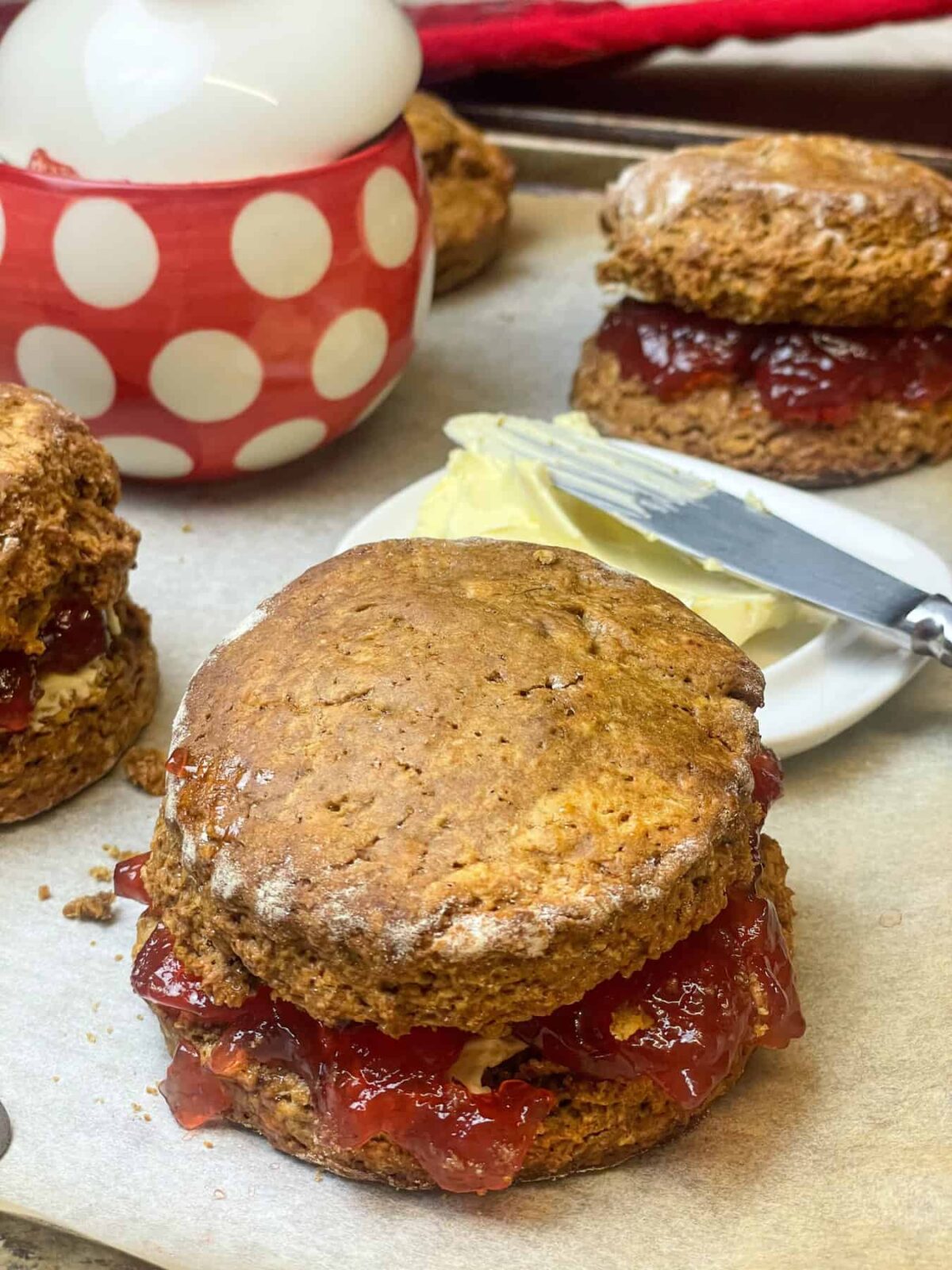
As we are a plant-based family recipe blog our recipes use vegan-friendly ingredients. All our recipes are prepared with everyday pantry ingredients and no special hard-to-find ingredients are included, and are based on real old-fashioned recipes. If you do not use dairy-free milk or dairy-free butter or margarine, then do feel free to substitute these ingredients for what you do have at home.
Ingredients
The ingredients you will need for this recipe are:
- butter or margarine, [we use Stork baking spread]
- plain flour [or all-purpose flour/cake flour]
- bicarbonate of soda [baking soda]
- baking powder
- salt [we used sea salt]
- treacle [or light molasses]
- granulated sugar
- ground ginger
- milk [we like to use soya milk, but any milk will do]
How to prepare
This recipe prepares 4 large treacle scones but it can also be used to make 6 or 8 smaller scones.
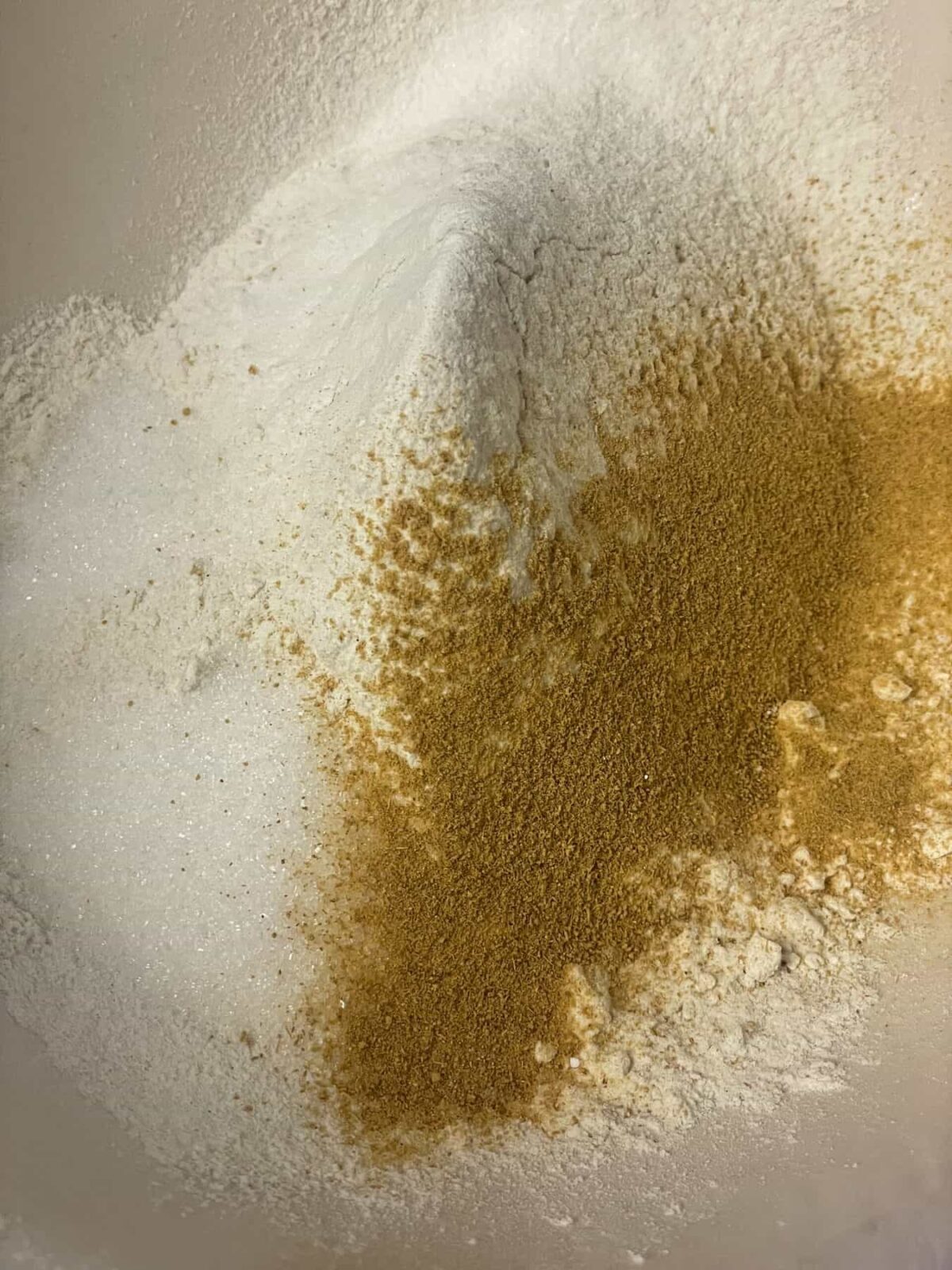
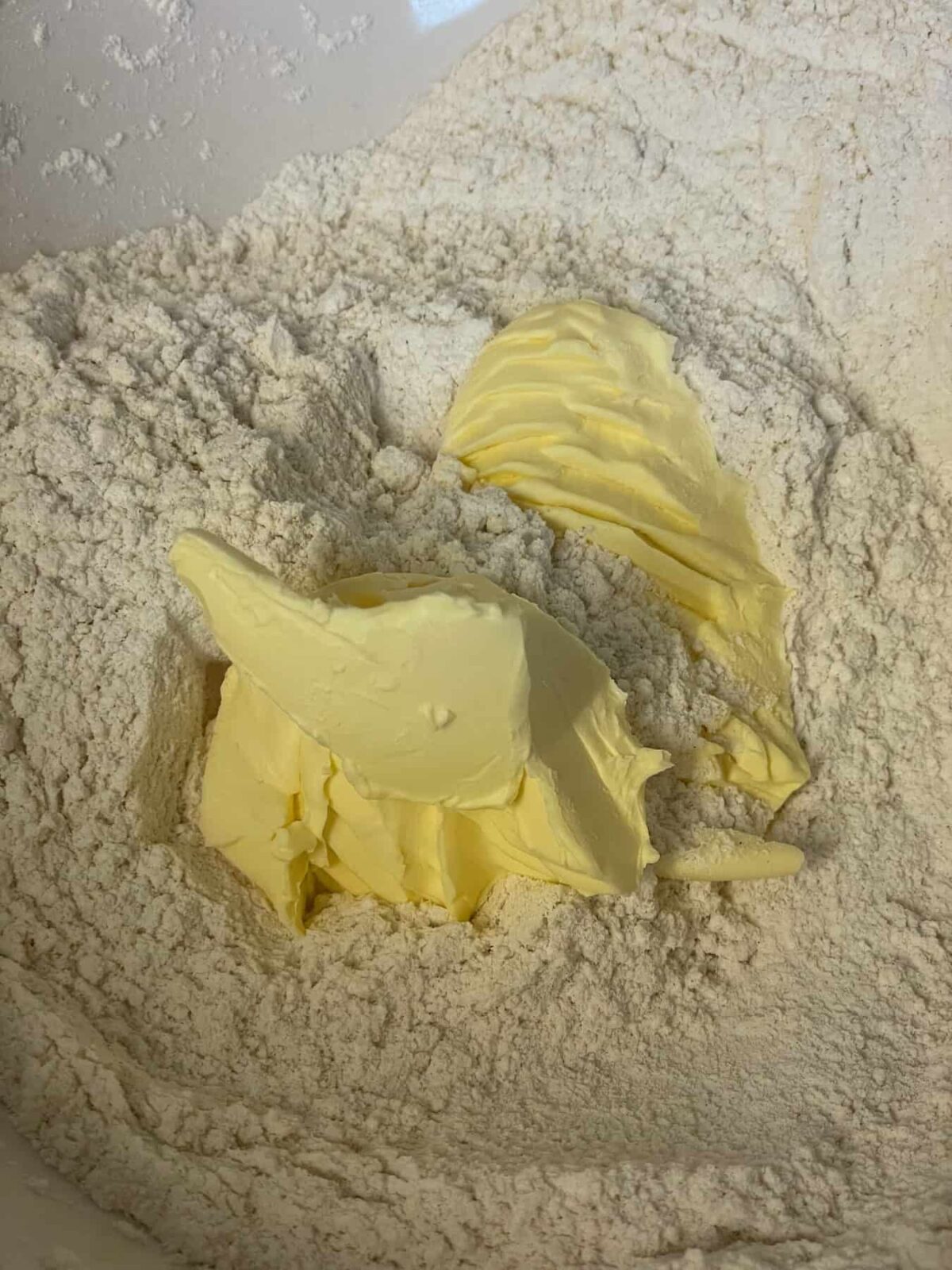
Step 1: Sift the flour, baking powder, bicarbonate of soda, and ginger powder into a mixing bowl.
Step 2: Stir through the salt and sugar.
Step 3: Add the margarine, broken up into small pieces.
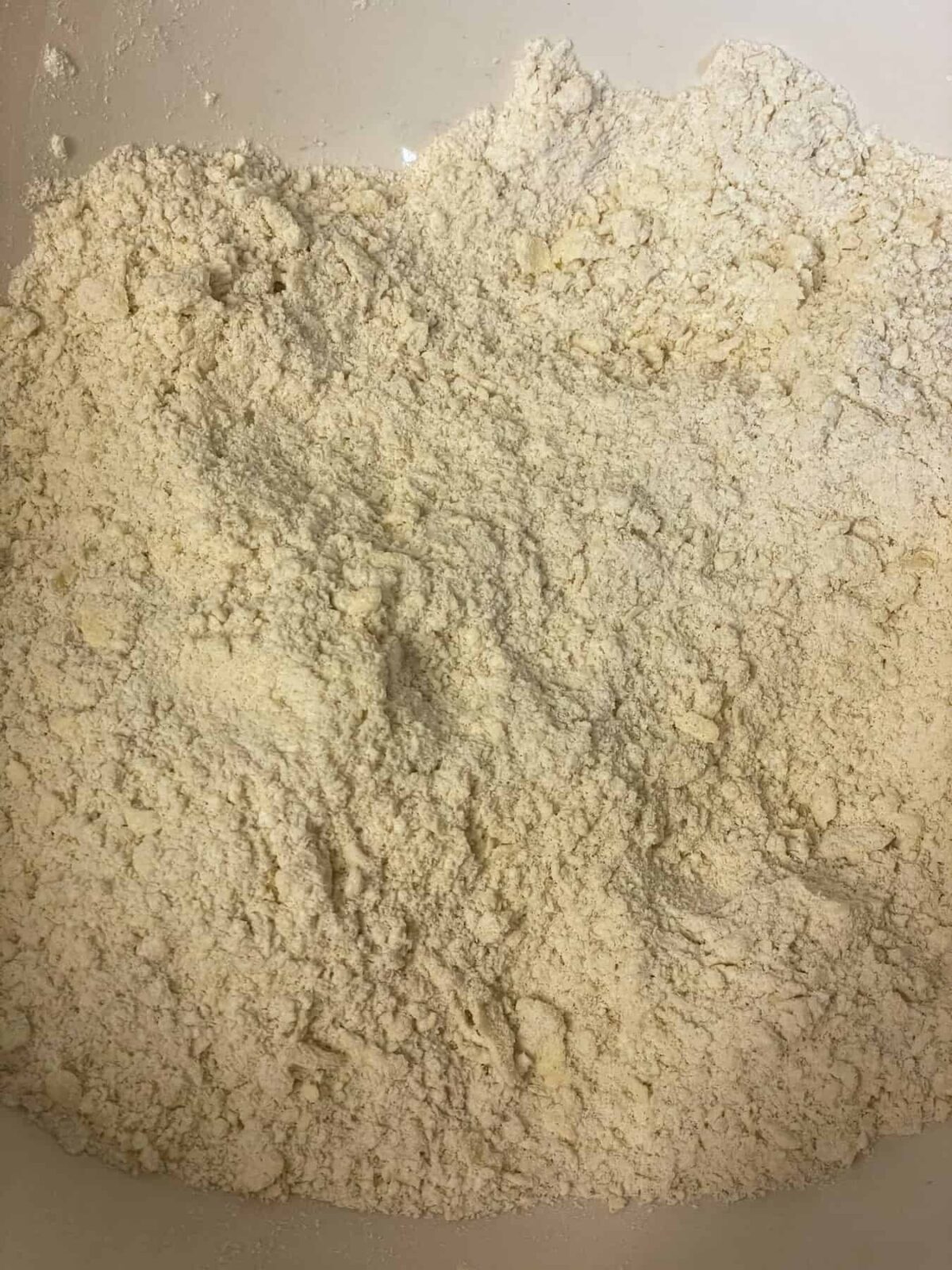
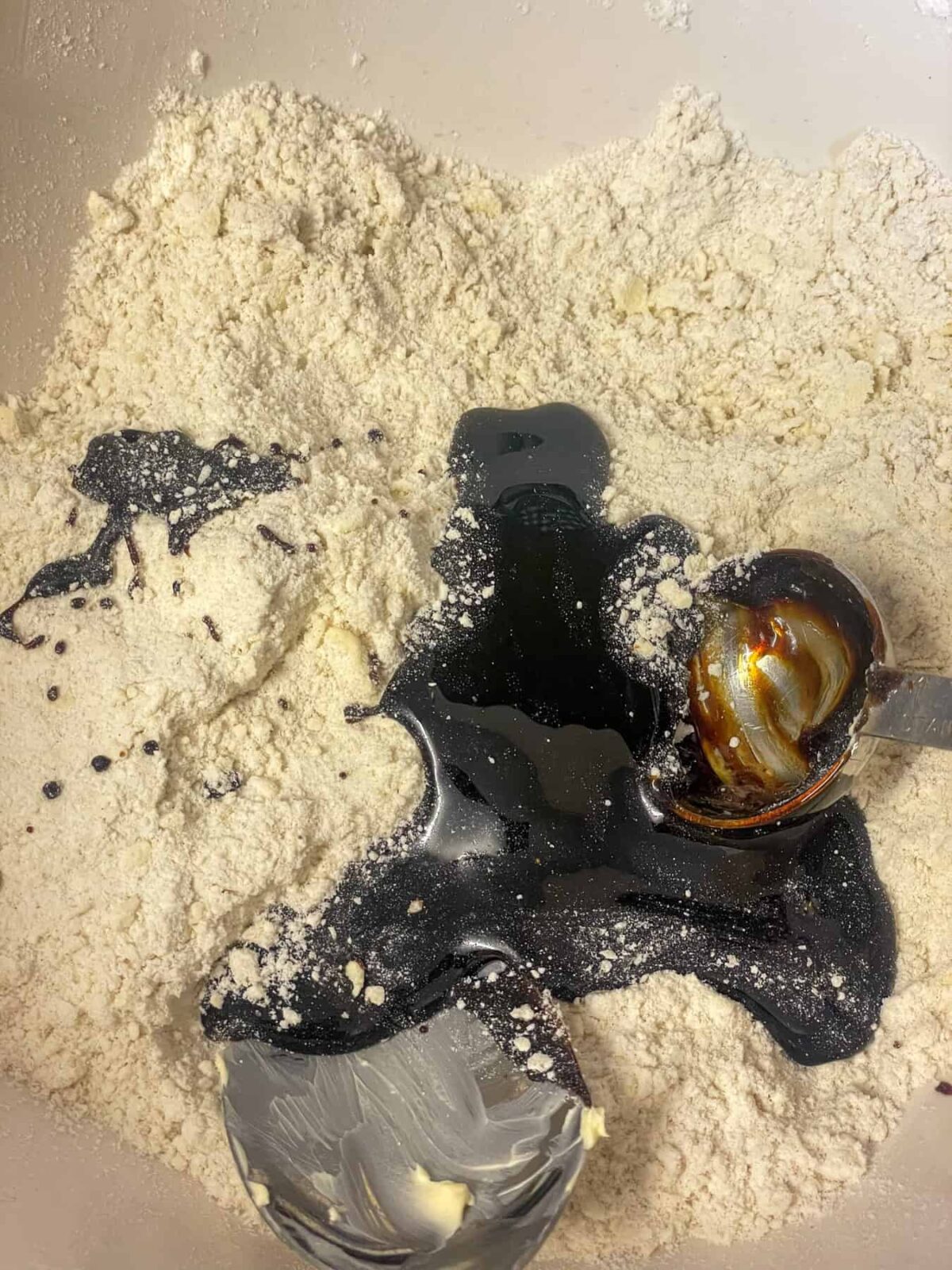
Step 4: Using your fingertips rub the margarine into the flour mixture until it resembles fine breadcrumbs.
Step 5: Give the bowl a shake back and forth, and it will bring up any large lumps that require rubbing in.
Step 6: Pour in the treacle.
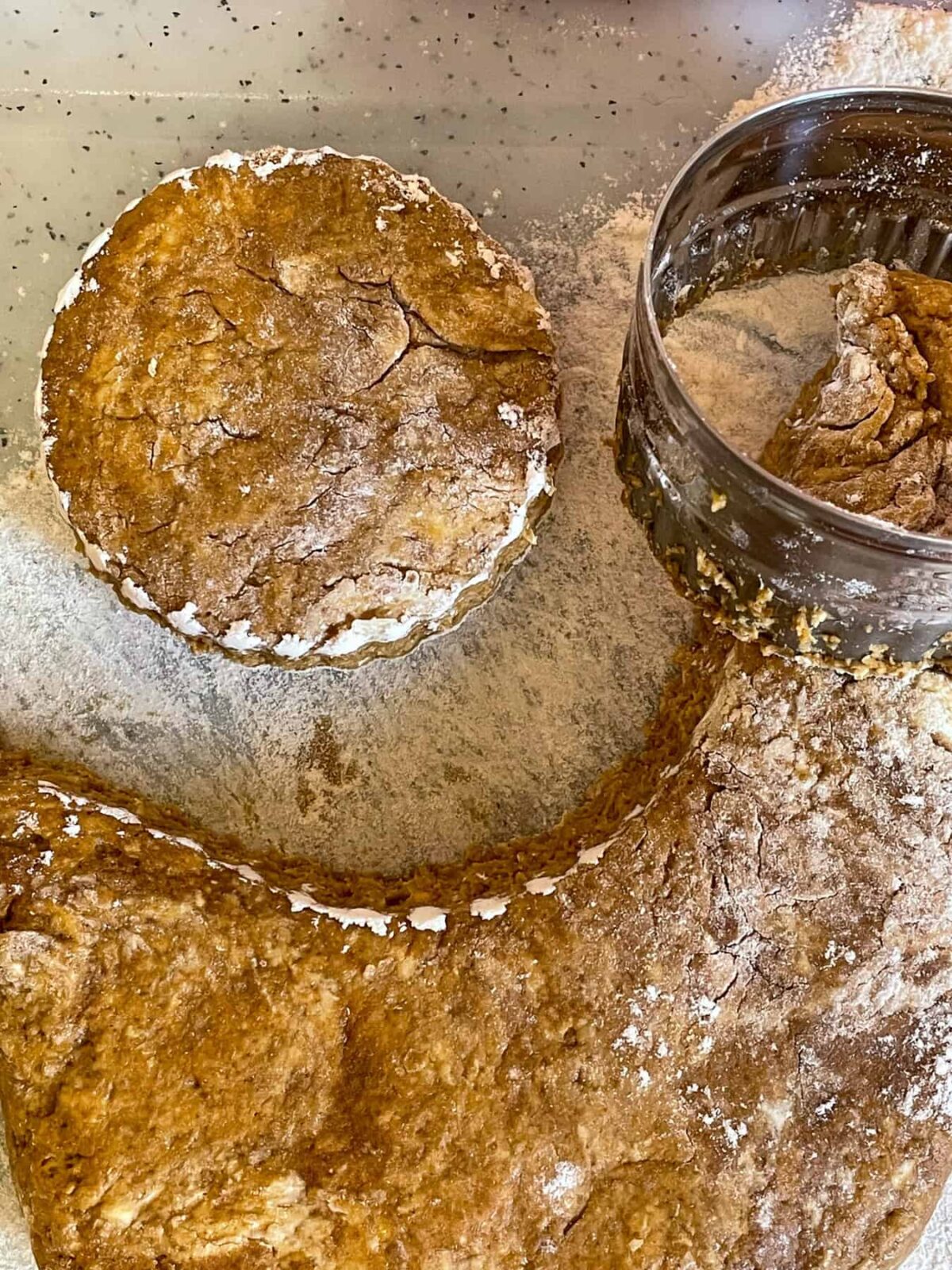
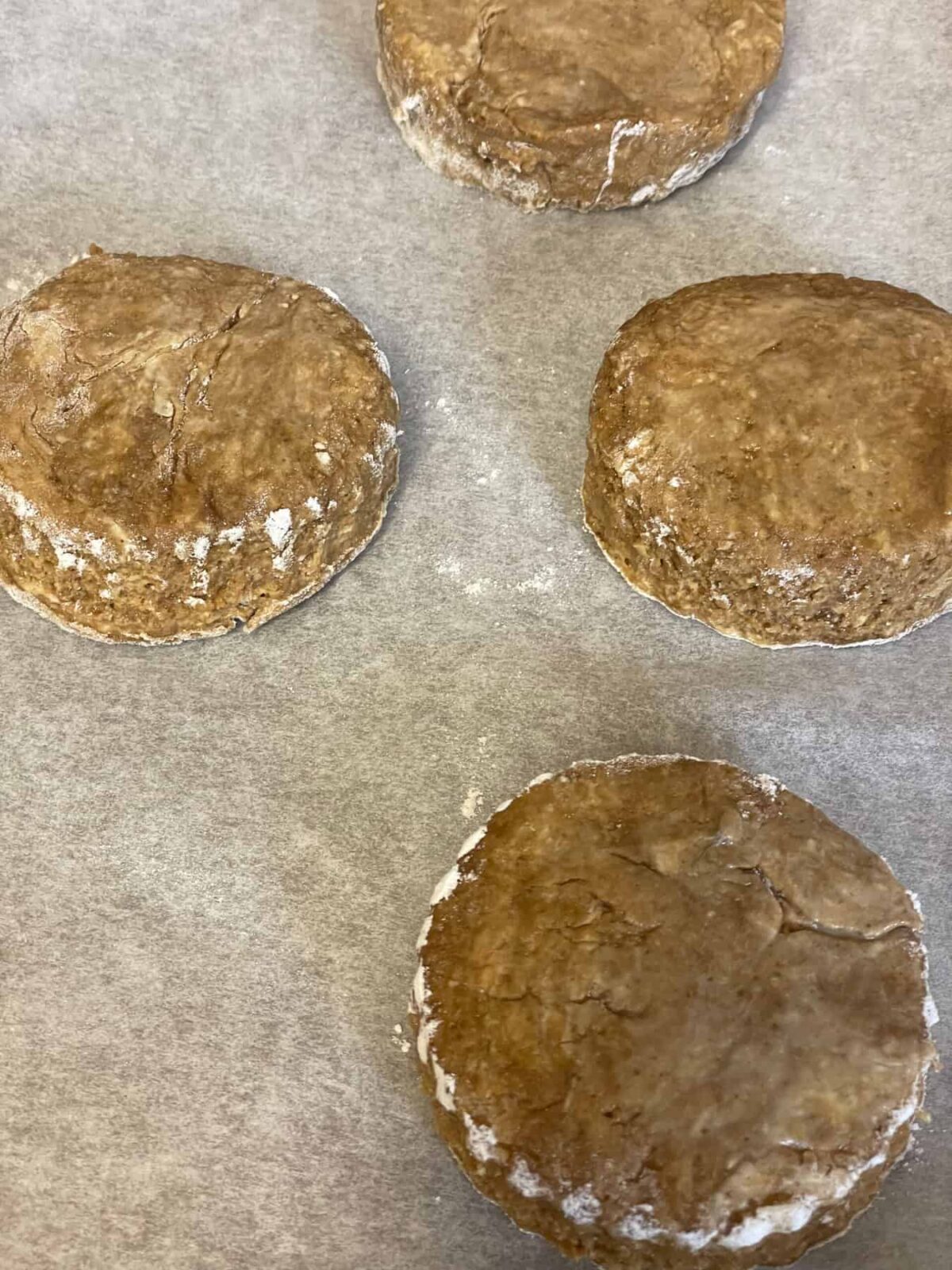
Step 7: Add small amounts of milk and stir, bringing the dough together with your hands until it comes together into a dough.
Step 8: Knead lightly for just a few seconds and then pat down to about an inch [2.5cm] thick.
Step 9: With a cookie cutter stamp out 4 rounds and place onto a baking tray.
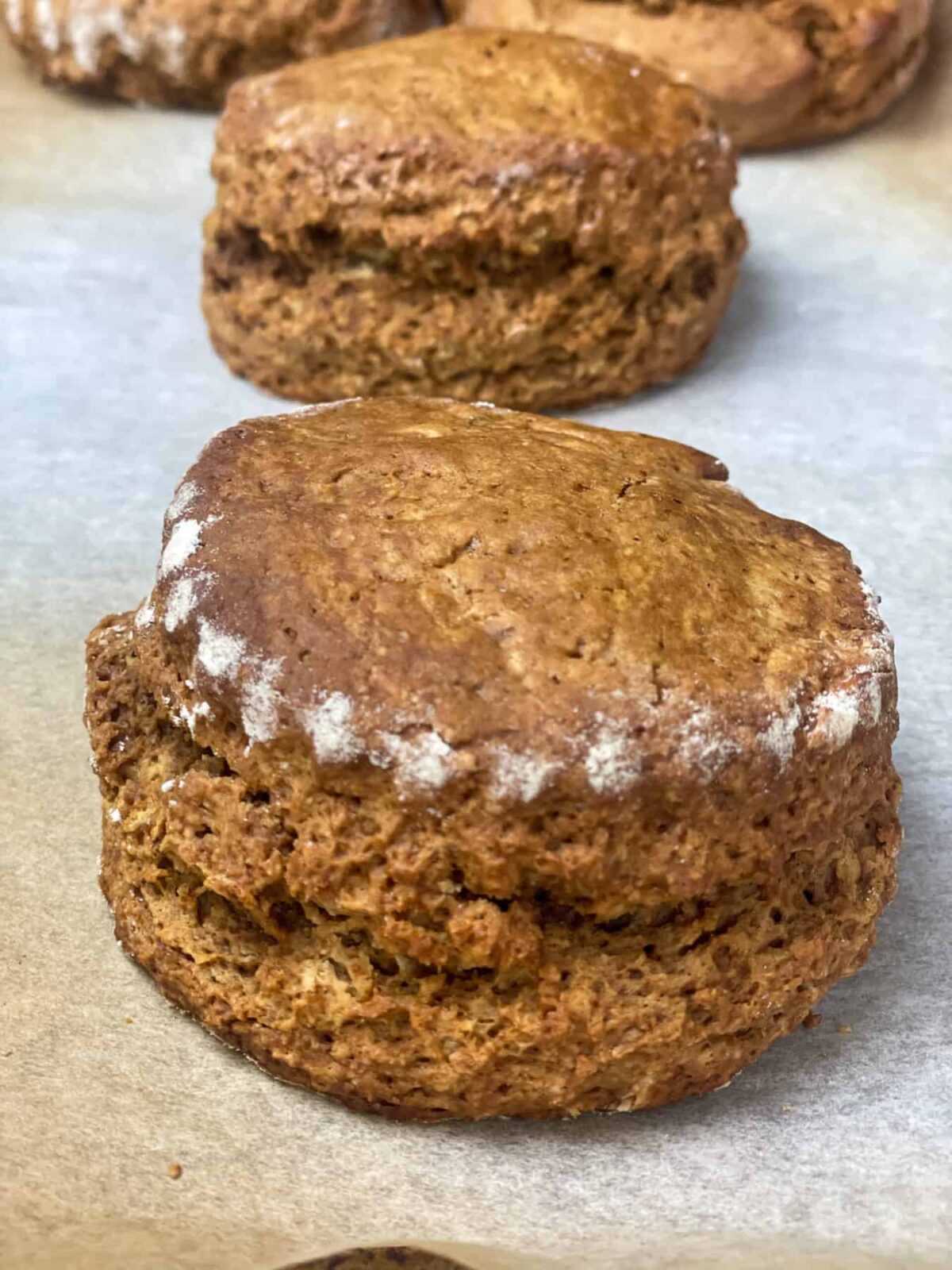
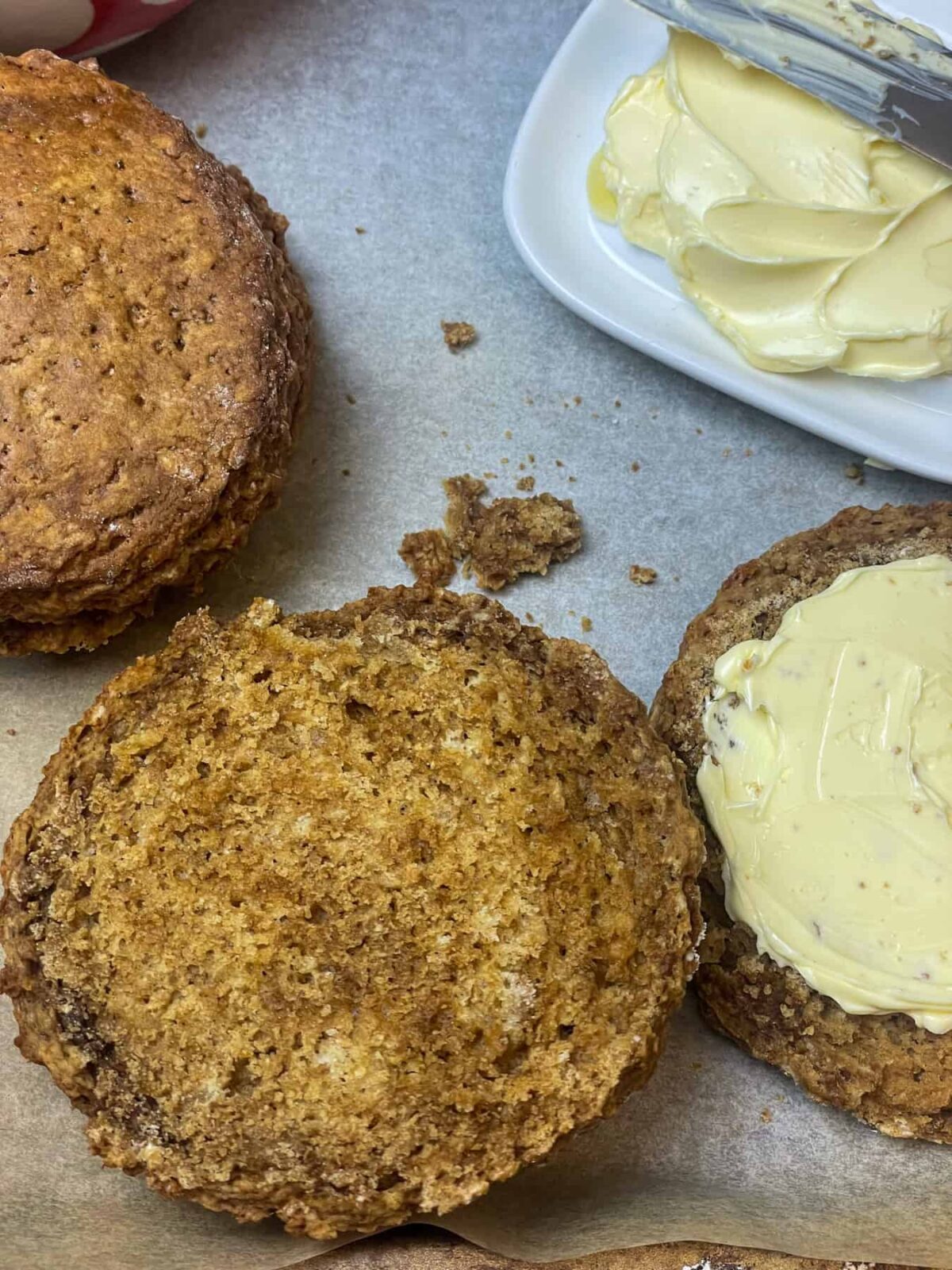
Step 10: Brush each scone surface with a little milk.
Step 11: Bake for 15 minutes or until scones have risen, are firm and have dark golden bits at the side.
Step 12: Leave on the baking tray or transfer to a wire rack until cool.
Recipe Notes
Storing
Store treacle scones within a covered container or within a food or bread bag for up to 3 days. Older scones can still be eaten, but it's recommended to split older scones into two and toast each side, before spreading with margarine or butter. Or refresh older scones by popping into a warm oven for a few minutes just until they are heated through.
Freezing
Treacle scones can frozen for 2-3 months, probably a little longer, but do wrap up well with food-safe wrap and pop into a food bag or covered container to avoid excess frost developing on the scone and freezer burn.
FAQ'S
Treacle or black treacle is a byproduct of the sugar refining process. It is a rich thick dark brown syrup that is not too sweet, a little bitter, has notes of caramel, and similar in flavour to molasses.
Black treacle is a popular ingredient in British supermarkets and stores and can be found within the baking section alongside the tins or bottles of golden syrup. Golden syrup is also a byproduct of sugar making, but is much lighter in colour compared to treacle and is a lot more sweeter.
If you cannot source black treacle for this treacle scone recipe then it can be substituted for the same amount of dark molasses. Molasses is like black treacle in terms of flavour and consistency, and there are different types of molasses - light, dark, and blackstrap - with the dark version being the most similar to black treacle. Alternatively, golden syrup, light molasses, dark corn syrup, or maple syrup can replace the treacle, and although the flavour of the scones will change and they won't have that distinctive treacle flavour, the scones will still be delicious.
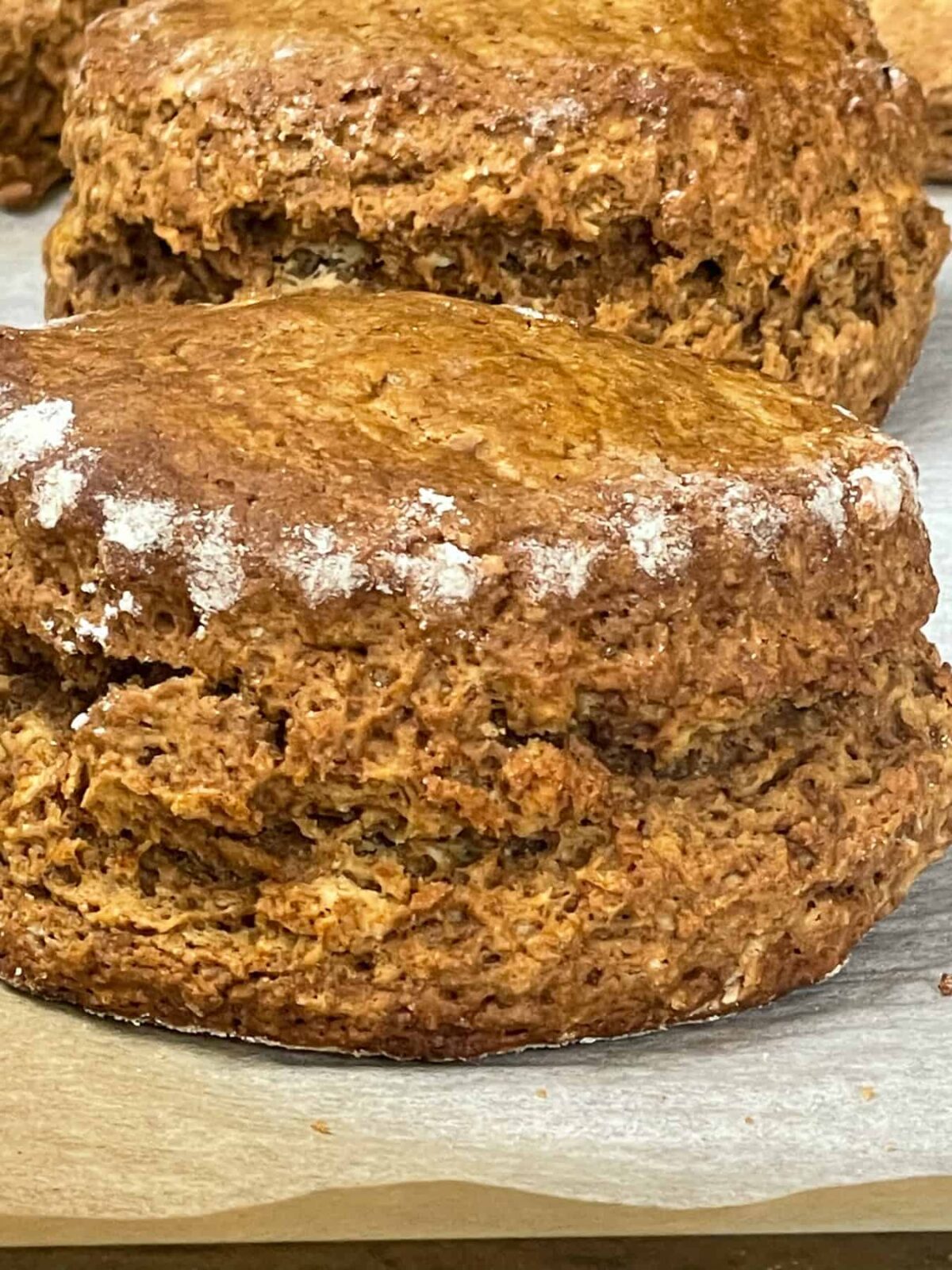
More traditional scone recipes
Being a Scottish family we love a good home-baked scone as nothing beats a warm just baked scone fresh from the oven with a nice cup of tea. Simple but so satisfying and is the perfect way to turn a gloomy day into a much better one!
A few of our family's favourite scone recipes are these Old-Fashioned Cherry Scones, and these Buttermilk Plain Scones, and these Old-Fashioned Cheese Scones, and these Edinburgh Fruit Scones.
For more traditional egg-free and dairy-free baking recipes do check out our Vegan Baking Recipes collection. All our recipes are prepared with everyday pantry ingredients, and the milk and fat used can be replaced with usual sort, so no special ingredients required.
***please note: for US measurements click the 'US customary button' within the recipe and the measurements will switch to tablespoons, cups, and ounces.***
📖 Recipe
Old-Fashioned Scottish Treacle Scones
Equipment
- Mixing bowl
- mixing spoon
- sieve
- biscuit or cookie cutter 3 inch [7 ½cm] or thereabouts
- Baking tray with sheet of greaseproof/baking paper
- Pastry brush for brushing plant milk over each scone, optional as can just use fingertips
Ingredients
- 225 grams plain flour [or cake flour/ all-purpose flour, sieved]
- 2 teaspoons baking powder l[evel teaspoon, sieved]
- ½ teaspoon bicarbonate of soda [baking soda, level teaspoon, sieved]
- ½ teaspoon salt [we used sea salt]
- 1 teaspoon ground ginger [or cinnamon/mixed spice/pumpkin spice powder]
- 60 grams margarine [or butter. we used Stork baking spread]
- 30 grams granulated sugar [or caster sugar]
- 2 tablespoons treacle [or light molasses]
- 200 millilitres milk [we used soya milk but any milk will do, more or less may be required, plus a little extra to brush over each scone]
Instructions
- Preheat the oven to 220°C / 200°C fan / 428°F / Gas mark
- Line a baking tray with baking paper.
- Sift the flour, baking powder, bicarbonate of soda, and ginger powder into a mixing bowl.225 grams plain flour, 2 teaspoons baking powder, ½ teaspoon bicarbonate of soda, 1 teaspoon ground ginger
- Stir through the sugar and salt.½ teaspoon salt, 30 grams granulated sugar
- Break the margarine up into small pieces, and using your fingertips rub the margarine into the flour mixture until it resembles fine breadcrumbs.Give the bowl a shake, back and forth, and the larger un-rubbed lumps will appear on the top. Rub these in.60 grams margarine
- Pour in the black treacle and half the milk. You may not require all the milk so just add a little at a time and stir, bringing the scone dough together into a ball.Sprinkle flour over your work surface.2 tablespoons treacle, 200 millilitres milk
- Knead the dough lightly for a few seconds. If the dough is too sticky sprinkle in extra flour and if the dough is too dry smooth over extra milk with your fingers and work it in, until the dough is smoothish.
- Gently pat the dough down with your hands until its about 1 inch thick.
- Stamp out scone rounds with a biscuit cutter. The cutter can be dipped into flour so that it doesn't stick to the dough.[Tip: don't twist the scone cutter when lifting the scone out, just lift the cutter straight up and gently press the scone out of the cutter.]
- Bring the dough scraps back together into a ball and pat down. Repeat until all the dough has been used. This recipe usually yields 4 large scones but a smaller biscuit cutter will result in a few more scones, about 6-8.
- Brush a little milk over the top of each scone, using a pastry brush or your finger tips.
- Place the scones on the baking tray and place on to the middle shelf of the oven, for about 15 minutes.Fan ovens may take a few minutes quicker so check after 12 minutes.Treacle scones are ready when they are firm, risen, have dark golden bits around the edges, and sound hollow when the base is tapped.
- Either leave on the baking tray to cool or transfer to a wire rack. These scones can be enjoyed warm or at room temperature.
Notes
- Nutritional information is for guidance only and is not an exact calculation as ingredients vary.
- Don't panic if your scones come out the oven in strange shapes! This sometimes happens when baking scones but the scones will still taste perfect. Not twisting the biscuit cutter when stamping out scones can help prevent wonky rising.
- This recipe yields 4-5 large scones, if a smaller 1 ½- 2 inch [3-5 cm] biscuit cutter is used the recipe could make 6-10 smaller scones.
- Store scones for up to 3 days, within a food or bread bag, or within a covered container. Wrap in kitchen foil to keep fresher for longer.
- Older scones can be refreshed by splitting into 2 pieces and toasting. Spread with some margarine or butter once toasted. Or place the scones into a warm oven for a few minutes until warmed through.
- Treacle scones can be frozen for up to 3-4 months. Wrap well to avoid freezer burn.
- Treacle scones are delicious split and spread with margarine, butter, chutney, hummus, peanut butter, fruit jam, marmalade, etc.
Nutrition
Prepared these Old-Fashioned Treacle Scones? Do let us know how you got on with the recipe by leaving us a comment and clicking the star ratings. It's very much appreciated. Jacq x
Leave a Reply